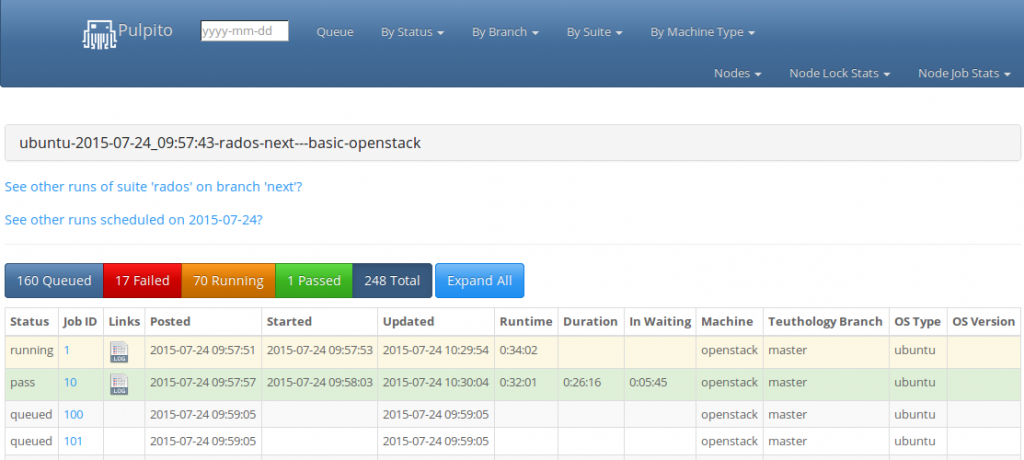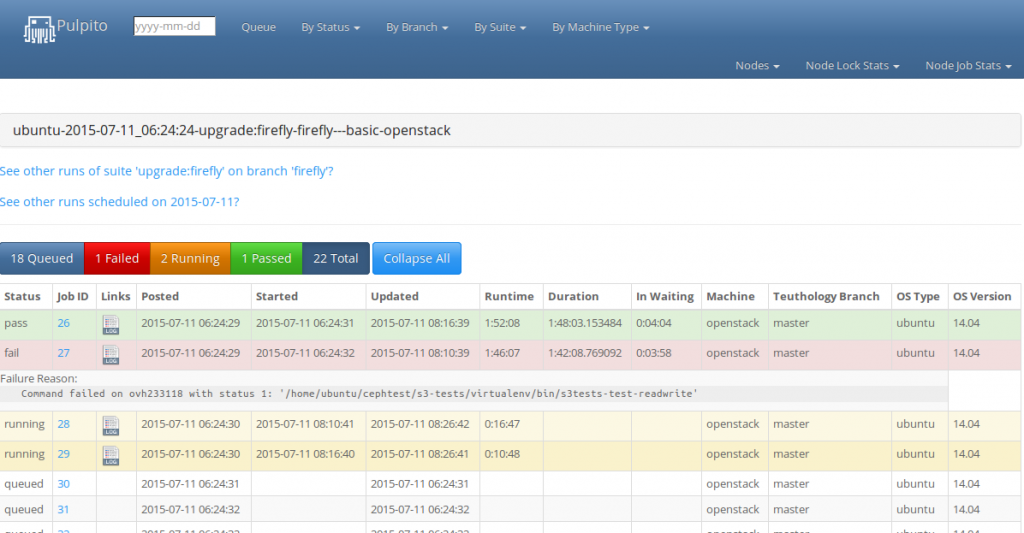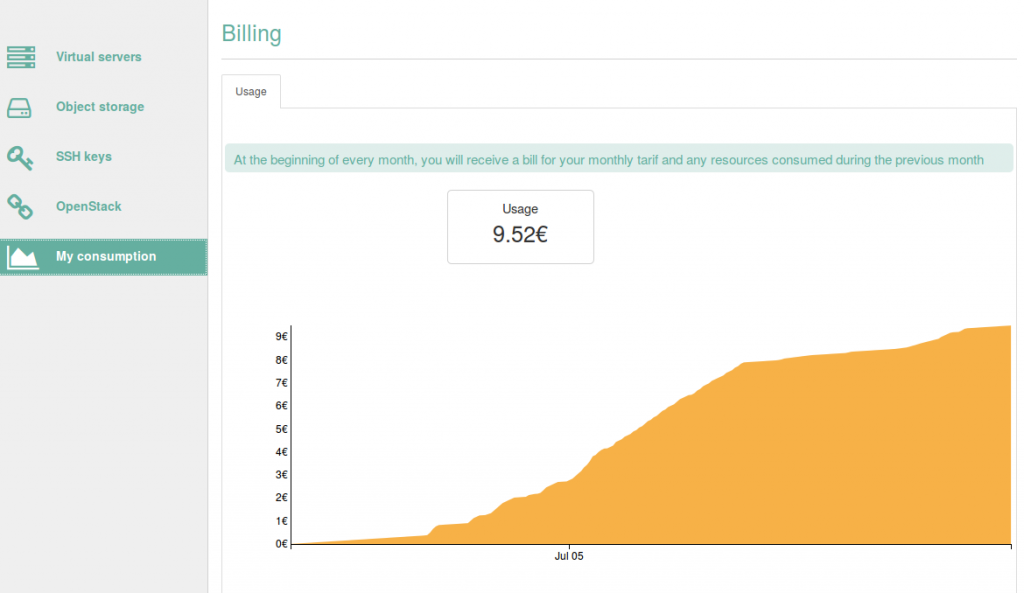When a teuthology integration test for Ceph fails, the results are analyzed to find the source of the problem. For instance the upgrade suite: pool_create failed with error -4 EINTR issue was reported early October 2015, with multiple integration job failures.
The first step is to look into the teuthology log which revealed that pools could not be created.
failed: error rados_pool_create(test-rados-api-vpm049-15238-1) \ failed with error -4"
The 4 stands for EINTR. The paddles database is used by teuthology to store test results and can be queried via HTTP. For instance:
curl --silent http://paddles.front.sepia.ceph.com/runs/ |
jq '.[] | \
select(.name | contains("upgrade:firefly-hammer-x")) | \
select(.branch == "infernalis") | \
select(.status | contains("finished")) \
| .name' | \
while read run ; do eval run=$run ; \
curl --silent http://paddles.front.sepia.ceph.com/runs/$run/jobs/ | \
jq '.[] | "http://paddles.front.sepia.ceph.com/runs/\(.name)/jobs/\(.job_id)/"' ; \
done | \
while read url ; do eval url=$url ; \
curl --silent $url | \
jq 'if((.description != null) and \
(.description | contains("parallel")) and \
(.success == true)) then "'$url'" else null end' ; \
done | grep -v null
shows which successful jobs the upgrade:firefly-hammer-x suites run against the infernalis branch (the first jq expression) were involved in a parallel test (that is the name of a subdirectory of the suite). This was not sufficient to figure out the root cause of the problem because:
- it only provides access to the last 100 runs
- it does allow to grep the teuthology log file for a string
With the teuthology logs in the /a directory (it’s actually a 100TB CephFS mount half full), the following shell snippet can be used to find the upgrade tests that failed with the error -4 message in the logs.
for run in *2015-{07,08,09,10}*upgrade* ; do for job in $run/* ; do \
test -d $job || continue ; \
config=$job/config.yaml ; test -f $config || continue ; \
summary=$job/summary.yaml ; test -f $summary || continue ; \
if shyaml get-value branch < $config | grep -q hammer && \
shyaml get-value success < $summary | grep -qi false && \
grep -q 'error -4' $job/teuthology.log ; then
echo $job ;
fi ; \
done ; done
It looks for all upgrade runs, back to July 2015. shyaml is used to query the branch from the job configuration and only keep those targeting hammer. If the job failed (according to the success value found in the summary file), the error is looked up in the teuthology.log file. The first failed job is found early september:
teuthology-2015-09-11_17:18:07-upgrade:firefly-x-hammer-distro-basic-vps/1051109
It happened on a regular basis after that date but was only reported early October. The commits merged in the hammer branch around that time are displayed with:
git log --merges --since 2015-09-01 --until 2015-09-11 --format='%H' ceph/hammer | \
while read sha1 ; do \
echo ; git log --format='** %aD "%s":https://github.com/ceph/ceph/commit/%H' ${sha1}^1..${sha1} ; \
done | perl -p -e 'print "* \"PR $1\":https://github.com/ceph/ceph/pull/$1\n" if(/Merge pull request #(\d+)/)'
It can be copy pasted in redmine issue. It turns out that a pull request merged September 6th was responsible for the failure.







